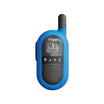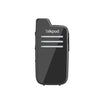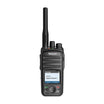Since the first wireless transceiver was installed in a Bayonne, New Jersey police car in 1933, two-way radio has been a mission-critical technology for police, firefighters, search and rescue workers and others on the front lines of public safety. And increasingly, as new models have reduced the size and cost of two-way radios, the technology has been adopted by business professionals as well.
Industries including transportation, education, construction, manufacturing, energy and utilities, private security, government, hospitality, retail, and many others are finding that two-way radio can improve efficiency, worker productivity and responsiveness by allowing mobile teams to share business and customer information instantly.
Through most of its history, two-way radio has meant analog voice — the representation of sound waves as either amplitude modulated (AM) or frequency modulated (FM) radio waves. In fact, this is one of the last areas of professional communications to be touched by digital technology. But that’s changing, very quickly, for very good reasons.
Modulating the voice into digital signals, rather than analog, provides several advantages. First and foremost, digital technology provides better noise rejection and preserves voice quality over a greater range than analog. Especially at the farthest edges of the transmission range, users can hear what’s being said much more clearly — increasing the effective range of the radio solution and keeping users responsive to changing situations in the field.
Depending on the technologies used, digital systems can also be designed to:
• Make more efficient use of available, licensed RF spectrum
• Combine voice and data access in the same device, delivering more information while empowering field workers with systems that are more portable, flexible, and much easier to use than two different and incompatible systems
• Enable integration and interoperability with back-end data systems and external systems
• Combine analog and digital voice in the same device, easing the migration to digital while preserving investments in analog technology
• Provide strong, practical, easy-to-use privacy solutions without the significant loss in voice quality that analog scrambling can cause
• Enable flexible and reliable call control and signaling capabilities
• Flexibly adapt to changing business needs and new applications through a modular architecture
The clear advantages of digital radio — along with increasing regulatory pressures to use RF spectrum more efficiently — will drive widespread adoption of professional two-way digital radio solutions in the coming years. If you’re using analog today, you’ll almost certainly be migrating to digital tomorrow. Now is the time to research the available technologies so that, when you’re ready to make the move, you’ll choose systems that provide the greatest benefit over the long term.










































